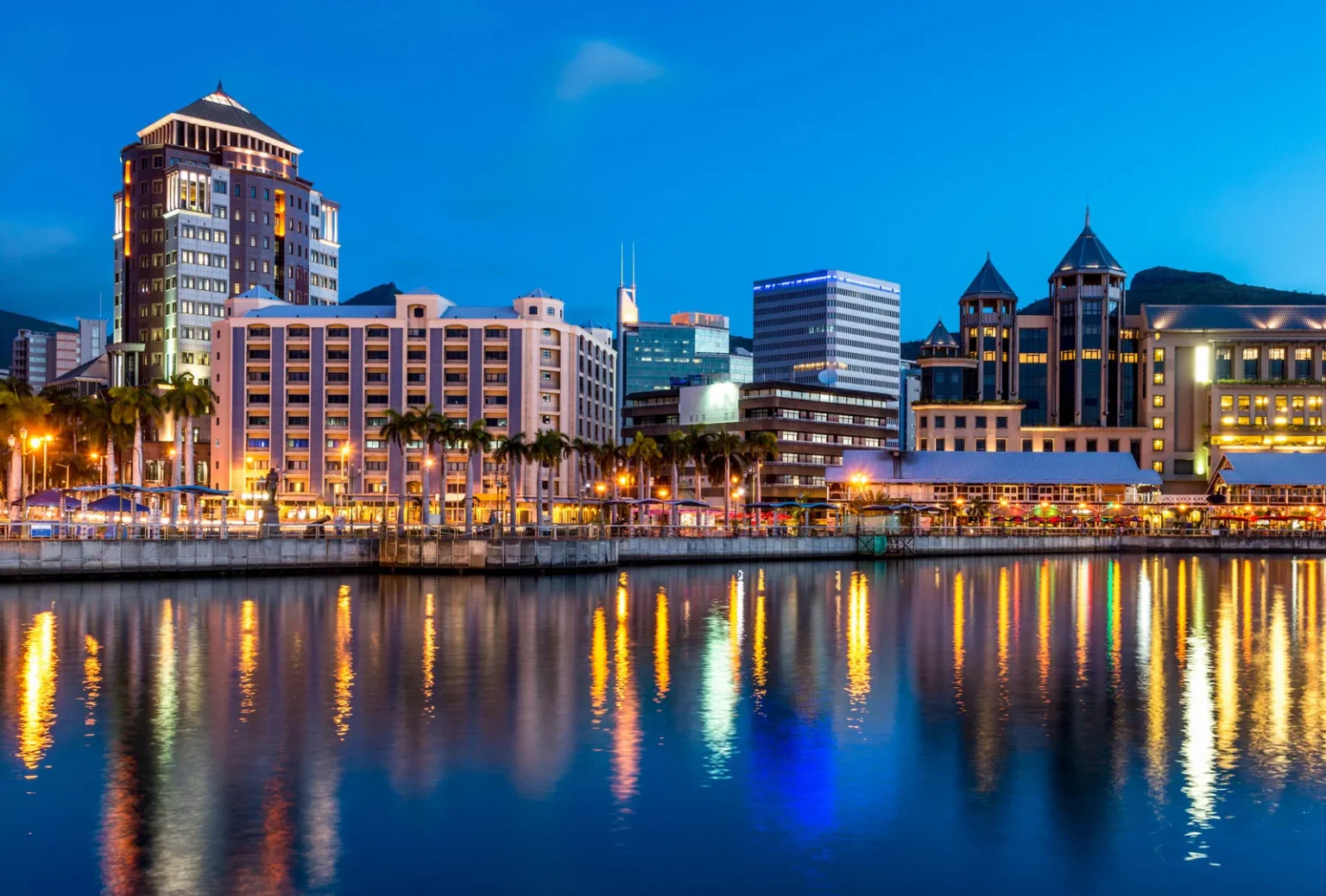At a Glance
- Mauritius blends turquoise beaches, volcanic hikes, and rich cultural heritage into one seamless experience.
- From sacred lakes to Creole villages, each region unveils a different side of the island.
- UNESCO sites, coral reefs, and botanical wonders make Mauritius a top-tier global travel destination.
Mauritius is more than just a postcard-perfect island — it’s a rich tapestry of turquoise coastlines, lush mountain trails, and cultural heritage shaped by centuries of global influence.
Located in the Indian Ocean off the southeast coast of Africa, this tropical paradise effortlessly blends scenic beauty with authentic experiences.
Whether you’re chasing adventure, culture, or a quiet escape, Mauritius delivers it all.
Often ranked among the world’s top island destinations, Mauritius draws travelers with its idyllic beaches, coral reefs, and five-star resorts.
But beyond the luxury retreats and clear waters lies a deeper story—one of colonial legacies, sacred pilgrimage sites, volcanic wonders, and protected biodiversity.
Each region offers a different flavor of the island, from the French-inspired fishing villages in the north to the rugged natural parks of the south.
The island’s compact size makes it easy to explore, offering diverse experiences within just a few hours’ drive.
You can hike UNESCO-listed peaks in the morning, relax on powder-white sands by noon, and stroll through historic towns before sunset.
Its unique combination of Creole warmth, Indian traditions, and European refinement makes Mauritius stand apart from other island getaways.
Here’s a curated list of the best places to visit in Mauritius—each offering something extraordinary.
Cap Malheureux: A tranquil escape with iconic views
Located just minutes from Grand Baie, Cap Malheureux is a charming fishing village known for its peace, history, and postcard-worthy landscapes.
The village gets its name—“Cape of Misfortune”—from shipwrecks along its rugged coast. Despite its ominous name, it’s one of the most peaceful spots on the island.
The crown jewel is the Notre-Dame Auxiliatrice Church, or Red Roof Church, a cultural icon set against turquoise waters and views of Coin de Mire island.
After visiting the chapel, stroll to the quiet jetty for breathtaking photos and then unwind in the shaded picnic areas by the shore.
Mon Choisy Beach: A local favorite for sun, shade, and serenity
Among the most popular beaches in Mauritius, Mon Choisy Beach is a haven for swimmers and sunseekers.
Its calm, crystal-clear lagoon and fine white sand stretch for over a kilometer, shaded by Casuarina trees.
While weekends bring in local families for picnics, you’ll find plenty of space to relax or engage in water sports like paddleboarding or jet skiing.
For a local taste, sample Mauritian street food from vendors under the trees—fresh seafood and tropical fruits are island staples.
Trou aux Biches: Family-friendly bliss with sunset magic
Nestled on the northwest coast between Mont Choisy and Pointe aux Piments, Trou aux Biches Beach boasts a tranquil atmosphere ideal for families.
Its shallow, calm waters are perfect for snorkeling, kayaking, and swimming, while the beach’s soft sands invite long, lazy walks.
Despite its popularity, the beach retains a serene vibe, especially at sunset, when the sky glows above anchored boats.
Food stalls nearby serve local favorites like dholl puri and samosas, making it a well-rounded destination.
Port Louis: A Capital City of Contrasts
Often overlooked, Port Louis offers a fascinating blend of old and new.
From colonial-era buildings to modern shopping centers, the capital reflects the island’s dynamic evolution.
Start at Le Caudan Waterfront to explore boutiques, cafes, and the Blue Penny Museum.
Don’t miss the Central Market, Aapravasi Ghat (a UNESCO World Heritage Site), and Fort Adelaide.
For a deeper dive, visit the Champ de Mars racecourse or explore side streets lined with historic Creole architecture and tempting street food.
Albion: Quiet Charm with panoramic ocean views
Located on the western coast, Albion is perfect for travelers seeking peace over parties.
Its main attractions are the Albion Lighthouse, which offers sweeping Indian Ocean views, and its quiet beach—ideal for snorkeling or reading under the sun without crowds.
Albion’s low-key vibe makes it an excellent stop for couples or solo travelers who prefer a slower pace and scenic detours.
Le Morne Peninsula: A World Heritage Jewel
Le Morne Beach is one of Mauritius’ most scenic destinations, known for its dramatic setting beneath the towering Le Morne Brabant Mountain—a UNESCO World Heritage Site.
Its turquoise waters are calm thanks to protective coral reefs, making it perfect for swimming or snorkeling. On windier days, the beach turns into a kite-surfing paradise.
The real adventure lies in hiking Le Morne Brabant.
The summit offers panoramic views over lagoons and reefs, along with poignant historical insight into the mountain’s past as a refuge for escaped slaves.
Ile Aux Benitier: A day trip to paradise
Accessible via a short boat ride, Ile aux Benitier is a popular island excursion.
Take a catamaran or speedboat to explore its white-sand beaches, swim with dolphins, and marvel at Crystal Rock with Le Morne Mountain as your backdrop.
Enjoy a beachside barbecue, sip cocktails, and soak in the island’s tranquility.
For a quieter experience, venture away from the main dock to discover your own slice of solitude.
Grand Bassin: A sacred site in the heart of Mauritius
Also known as Ganga Talao, Grand Bassin is the island’s most revered Hindu site.
Nestled in the highlands at 550 meters above sea level, this crater lake is surrounded by temples and towering statues of deities like Shiva and Durga.
Every year during Maha Shivaratri, thousands of pilgrims walk barefoot to the site.
Visitors are welcome year-round, but modest attire and respect for religious customs are advised.
Chamarel: Waterfalls and volcanic wonders
Nature lovers should head straight to Chamarel. Home to Mauritius’ tallest waterfall, Chamarel Waterfall plunges nearly 100 meters into a lush canyon.
A nearby hike offers multiple viewpoints and a chance for a swim at the base.
Don’t miss the Seven-Colored Earth Geopark, where volcanic sands form rainbow-like dunes—an iconic geological marvel unique to Mauritius.
Ebony Forest: An eco-conscious adventure
Adjacent to Chamarel, Ebony Forest is a conservation area offering educational hikes and jaw-dropping views.
Walk through ancient ebony trees, spot rare birds, and meet giant tortoises as you climb to Sublime Point—a panoramic overlook of Le Morne, Flic en Flac, and Ile aux Benitiers.
You can hike the trail, drive partway via shuttle, or take a guided tour. It’s an eco-friendly must-visit for adventurous souls.
Mahebourg: Colonial history meets coastal calm
Mahebourg, once the capital of Mauritius, offers a quiet escape on the southeast coast. Rich in colonial architecture and local culture, this historic town feels frozen in time.
Visit the Mahebourg Market, stroll the scenic waterfront pier, and explore the Naval Museum. Stop by the Rault Biscuit Factory to see hand-crafted manioc biscuits made using centuries-old techniques. End your visit with a dip at nearby Blue Bay Beach.
La Vanille Nature Park: Wildlife Encounters for All Ages
Located in the island’s south, La Vanille Nature Park is home to crocodiles, giant Aldabra tortoises, monkeys, and a vast insectarium.
Ideal for families, it’s both educational and interactive—perfect for young explorers.
Pamplemousses Botanical Garden: Mauritius in Bloom
One of the oldest botanical gardens in the Southern Hemisphere, Pamplemousses (now Sir Seewoosagur Ramgoolam Botanical Garden) showcases tropical flora, including massive lily pads, sugarcane varieties, and century-old palm trees.
A guided tour is recommended to fully appreciate the historical significance and biodiversity of this lush, 300-year-old oasis.
Black River Gorges National Park: A Hiker’s Paradise
Covering over 68 square kilometers, Black River Gorges National Park is the largest protected forest in Mauritius.
Hike through misty trails, past waterfalls and viewpoints, and encounter endemic species like the Mauritius kestrel.
The park is a must-see for nature enthusiasts and the best place to experience Mauritius’ wild side.
Mauritius is not just a honeymooner’s dream—it’s a destination for those craving connection with nature, culture, and coastal luxury.
Whether you’re watching the sunset from a quiet beach, hiking through endemic forests, or exploring centuries of history in colonial towns, this island offers more than a vacation—it offers a transformation.















